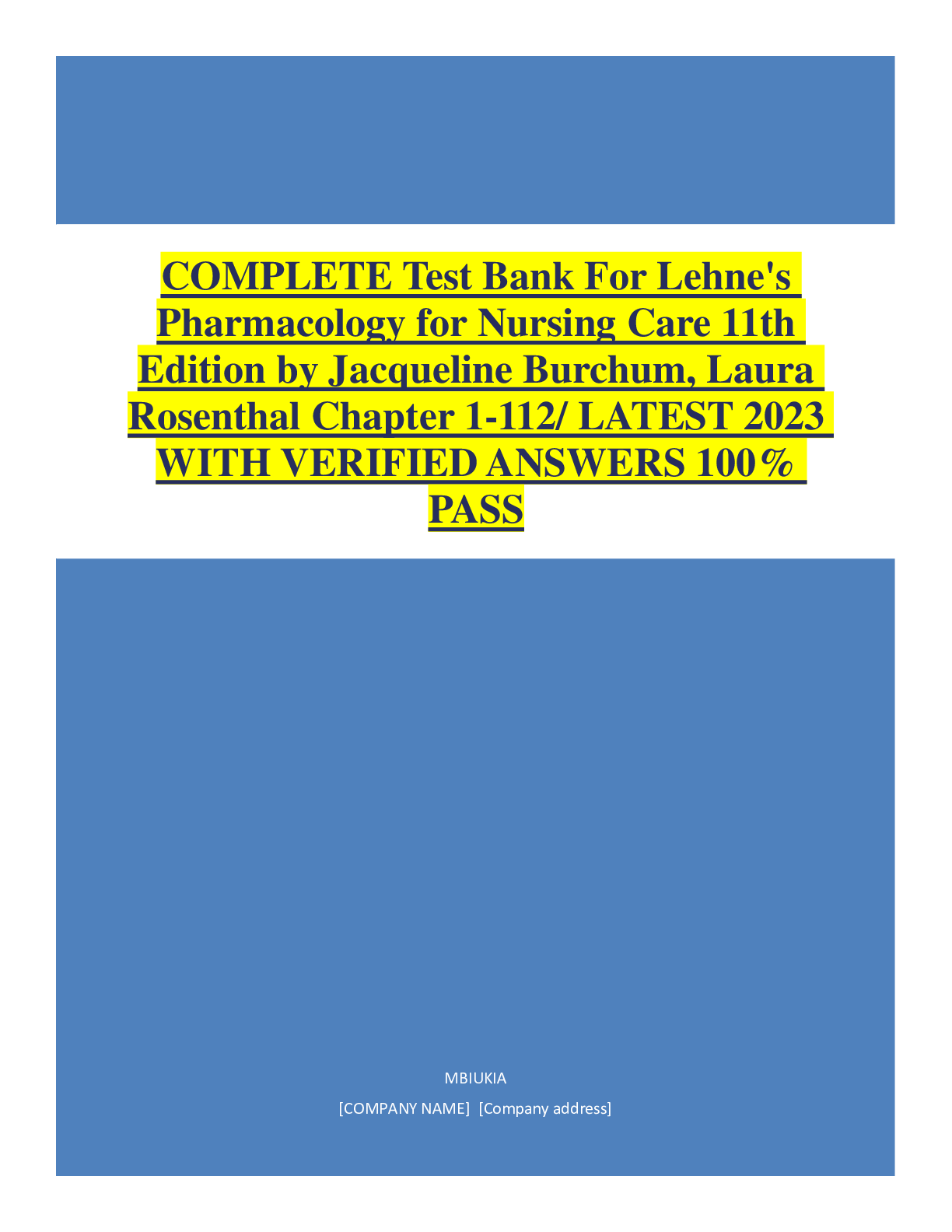*NURSING > QUESTIONS and ANSWERS > NR 293 Pharmacology for Nursing Week 1 Complete Study Guide; Latest 2020/2021.(Chamberlain) (All)
NR 293 Pharmacology for Nursing Week 1 Complete Study Guide; Latest 2020/2021.(Chamberlain)
Document Content and Description Below
Week 1-Pharm Chapter 1 The nursing process A research-supported organizational framework for professional nursing practice Ensures the delivery of thorough, individualized, and quality nur... sing care to patients Requires critical thinking Ongoing and constantly evolving process Contemporary Trends: The Quality and Safety Education for Nurses (QSEN) Project Preparing future nurses with the knowledge, skills, and attitudes (KSAs) needed to continuously improve the quality and safety of patient care within the health care system KSAs flow out of the QSEN initiatives and are being integrated into nursing education curricula and clinical outcomes. Six Major Initiatives of QSEN Patient-centered care Teamwork and collaboration Evidence-based practice (EBP) Quality improvement (QI) Safety Informatics Contemporary Trends: Interprofessional Education Collaboration (IPEC) Objective: Develop core competencies for interprofessional collaborative practice Interprofessional education occurs when students from two or more professionals learn from and with each other. Goal: Improve health outcomes Five Steps of the Nursing Process Assessment Nursing diagnosis Planning Goals Outcome criteria (measurement) Implementation, including patient education Evaluation Assessment Data collection, review, and analysis Medication profile Any and all drug use Prescriptions Over-the-counter medications Vitamins, herbs, and supplements Compliance and adherence ONLY RN CAN DO IT!!!! Planning Identification of goals and outcome criteria Goals Objective, measurable, and realistic with an established time period for achievement of the outcomes that are specifically stated in the outcome criteria Outcome criteria Concrete descriptions of patient goals Expectations for behavior For drug therapy: outcome is safe and effective administration of medications Implementation Initiation and completion of specific nursing actions as defined by the nursing diagnoses, goals, and outcome criteria Independent, collaborative, and dependent The “Rights” of Medication Administration Right drug Right dose Right time Right route Right patient Right documentation Current practice standards suggest these additional “Rights”: Right reason or indication Right to refuse Roles of Nursing Students in Medication Administration Must do: o Safe medication practices and contribute to a culture of safety o Know the limits of own knowledge and judgement, and seek help o Assess the appropriateness of the medication practice by considering the patient, the medication, and the environment o Adhere to the facility Policy expectations for direct supervision when administering Nursing student need to assess o Drug allergies o Drugs expected actions, dose range, side effects of the medication, and any precautions to be taken o The developmental stage of the infant/child/adolescent patient as well as adults and elderly patients o Any alterations in the patient’s condition or functional status which interferes with their physical capacity to take medication (for instance not being able to swallow oral medications) Chapter 2 Overview Drug Any chemical that affects the physiologic processes of a living organism Pharmacology Study or science of drugs Encompasses a variety of principles Drug Names Chemical name Describes the drug’s chemical composition and molecular structure Generic name (nonproprietary name) Name given by the United States Adopted Names Council Trade name (proprietary name) The drug has a registered trademark; use of the name is restricted by the drug’s patent owner (usually the manufacturer). Drug Classifications Drugs are grouped together based on similar properties Drug classifications Structure (ex. beta blocker) • Subclass (ex. selective, nonselective) Therapeutic use (ex. antibiotic) • Subclass (ex. penicillins) Prototypical drugs: first drug in a class of drugs Pharmacologic Principles Pharmaceutics Pharmacokinetics Pharmacodynamics Pharmacogenomics (pharmacogenetics) Pharmacotherapeutics Pharmacognosy Pharmacoeconomics Toxicology Definition of Pharmaceutics The study of how various drug forms influence the way in which the drug affects the body. Dissolution—dissolving of solid dosage forms and their absorption Definition of Pharmacokinetics (BODY) The study of what the body does to the drug o Absorption o Distribution o Metabolism o Excretion Definition of Pharmacodynamics The study of what the drug does to the body Definition of Pharmacotherapeutics The clinical use of drugs to prevent and treat diseases Defines principles of drug actions—the cellular processes that change in response to the presence of drug molecules Drugs are organized into pharmacologic classes. Definition of Toxicology Science of the adverse effects of chemicals on living organisms Clinical toxicology deals specifically with the care of poisoned patients. Definition of Pharmacognosy The study of natural (versus synthetic) drug sources (i.e., plant, animals, minerals) Definition of Pharmacoeconomics Study of the economic factors influencing the cost of drug therapy Cost–benefit analysis Pharmaceutics Different drug dosage forms have different pharmaceutical properties. Dosage form determines drug dissolution rate. Enteral Route The drug is absorbed into the systemic circulation through the oral or gastric mucosa or the small intestine. o Oral o Sublingual o Buccal o Rectal (can also be topical) Parenteral Route Intravenous (fastest delivery into the blood circulation) Intramuscular Subcutaneous Intradermal Intraarterial Intrathecal Intraarticular Topical Route Skin (including transdermal patches) Eyes Ears Nose Lungs (inhalation) Rectum Vagina Pharmacokinetics Absorption Bioavailability • The extent of drug absorption First pass effect • Large proportion of a drug is chemically changed into inactive metabolites by the liver. • Much smaller amount will be bioavailable. Distribution Transport of a drug by the bloodstream to its site of action Albumin is the most common blood protein and carries the majority of protein-bound drug molecules. Metabolism • Also referred to as biotransformation • Biochemical alteration of a drug into an inactive metabolite, a more soluble compound, a more potent active metabolite (as in the conversion of an inactive prodrug to its active form), or a less active metabolite. Metabolism (cont.) • Cytochrome P-450 enzymes (or simply P-450 enzymes), also known as microsomal enzymes • Lipophilic: “fat loving” • Hydrophilic: “water loving” • Enzymes Excretion • Elimination of drugs from the body • Renal excretion (primary organ responsible for excretion) • Biliary excretion • Bowel excretion Half-life: time required for half (50%) of a given drug to be removed from the body Measures the rate at which the drug is eliminated from the body After approximately five half-lives, most drugs are considered to be effectively removed from the body. Steady state • Physiologic state in which the amount of drug removed via elimination is equal to amount of drug absorbed with each dose. Pharmacokinetics Drug Effects cont The length of time until the onset and peak of action and the duration of action play an important part in determining the peak level (highest blood level) and trough level (lowest blood level) of a drug. If the peak blood level is too high, then drug toxicity may occur. Peak level: highest blood level of a drug Trough level: lowest blood level of a drug Toxicity: occurs if the peak blood level of the drug is too high Therapeutic drug monitoring Pharmacodynamics The study of what the drug does to the body The mechanism of drug actions in living tissues Therapeutic effect Mechanism of action Drug–receptor relationships Enzymes Nonselective Interactions Pharmacotherapeutics The clinical use of drugs to prevent and treat diseases Defines principles of drug actions—the cellular processes that change in response to the presence of drug molecules Drugs are organized into pharmacologic classes. Contraindications Acute therapy Maintenance therapy Supplemental (or replacement) therapy Palliative therapy Supportive therapy Prophylactic therapy Empiric therapy Monitoring Therapeutic response Adverse effects Toxic effects Therapeutic index Drug concentration Patient condition Tolerance: decreasing response to repeated drug doses Dependence: physiologic or psychological need for a drug Physical dependence: physiologic need for a drug to avoid physical withdrawal symptoms Psychological dependence: also known as addiction and is the obsessive desire for the euphoric effects of a drug Drug interactions [Show More]
Last updated: 2 years ago
Preview 1 out of 61 pages

Buy this document to get the full access instantly
Instant Download Access after purchase
Buy NowInstant download
We Accept:

Reviews( 0 )
$12.50
Can't find what you want? Try our AI powered Search
Document information
Connected school, study & course
About the document
Uploaded On
Mar 03, 2021
Number of pages
61
Written in
Additional information
This document has been written for:
Uploaded
Mar 03, 2021
Downloads
0
Views
66

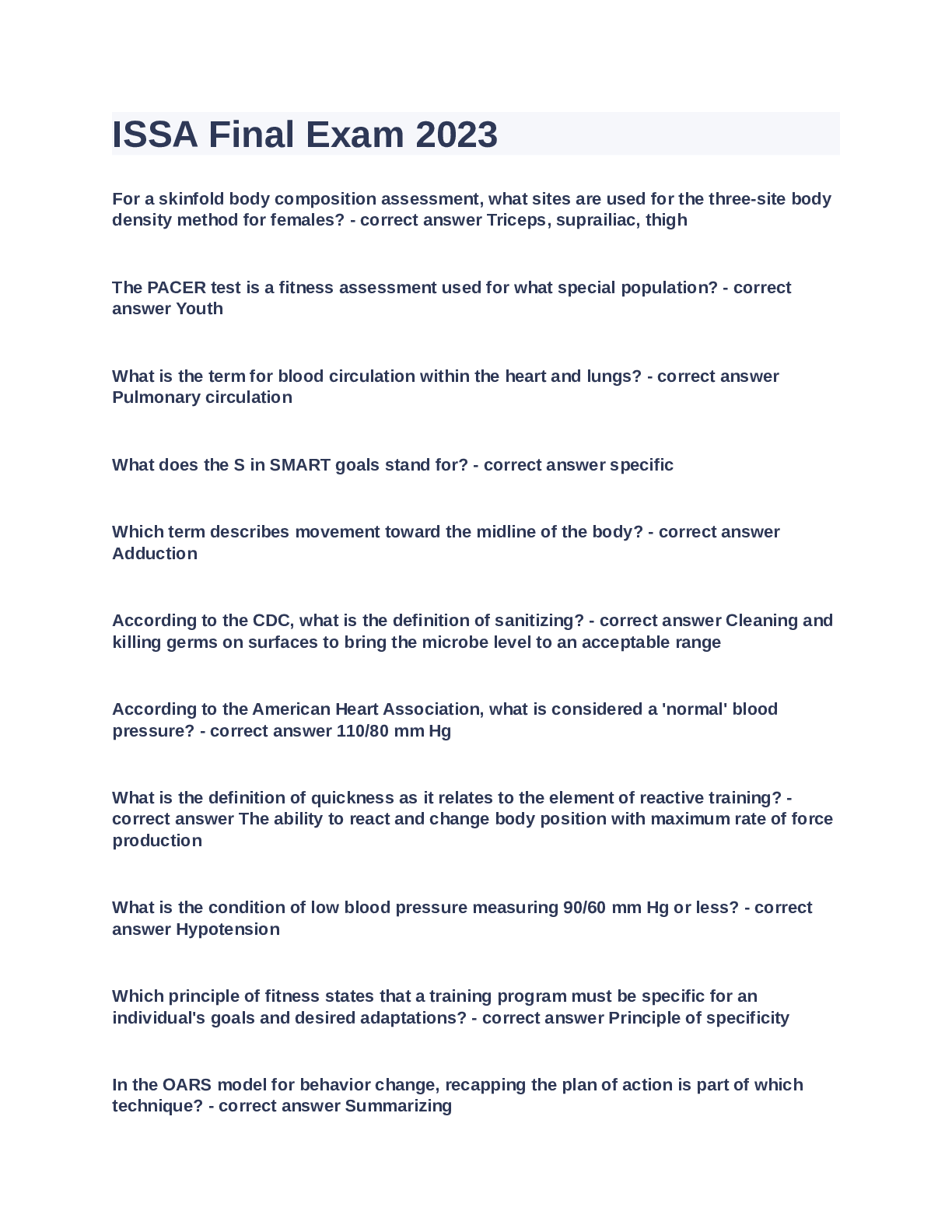
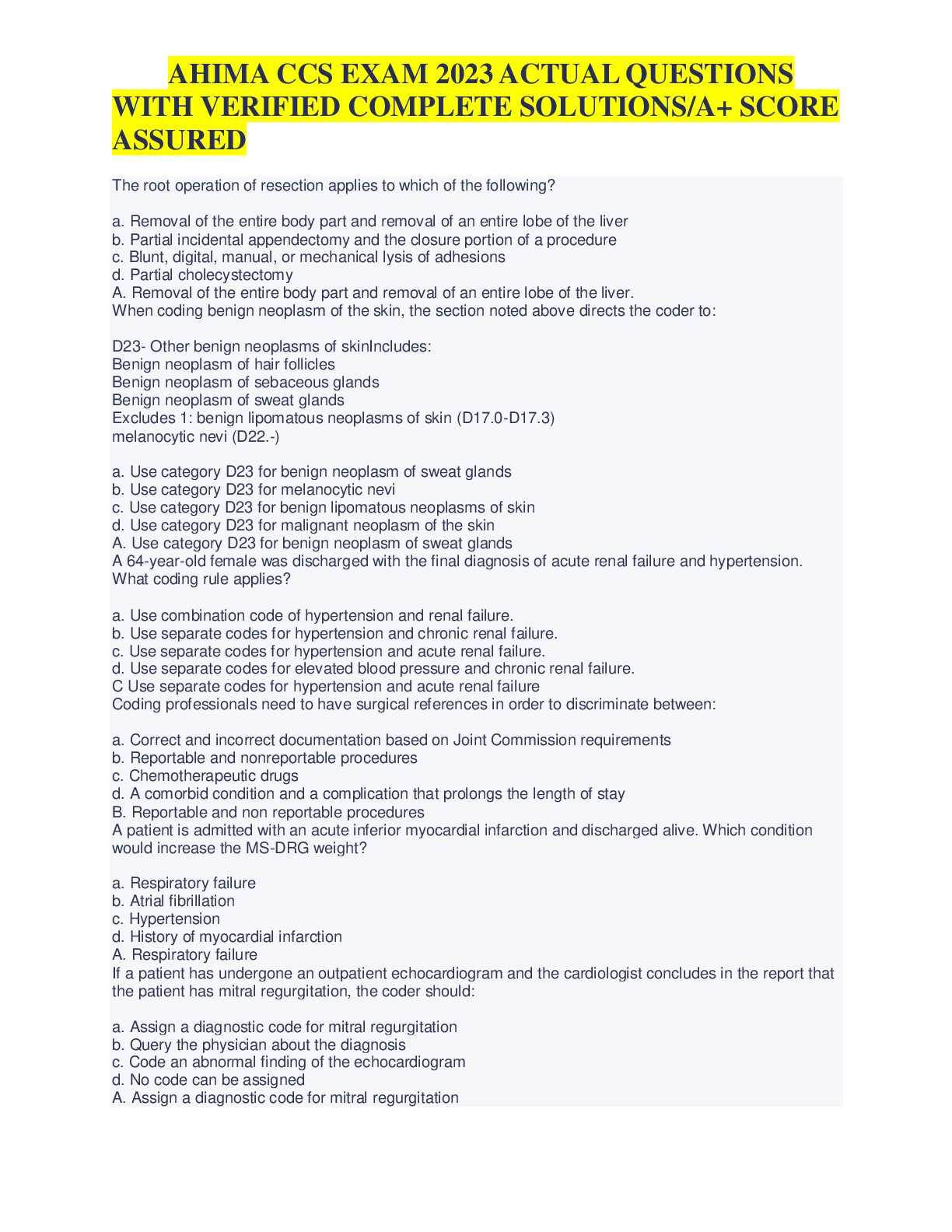
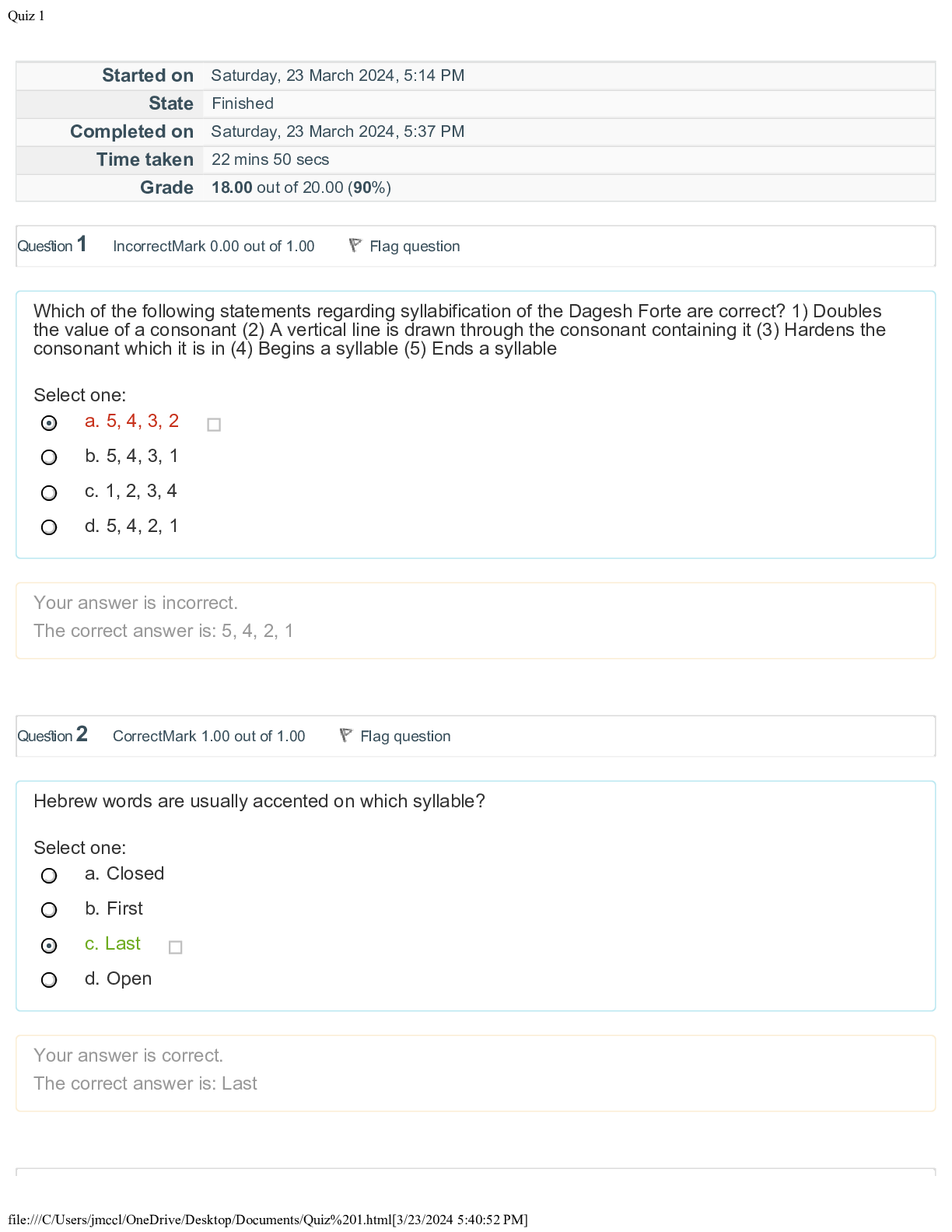




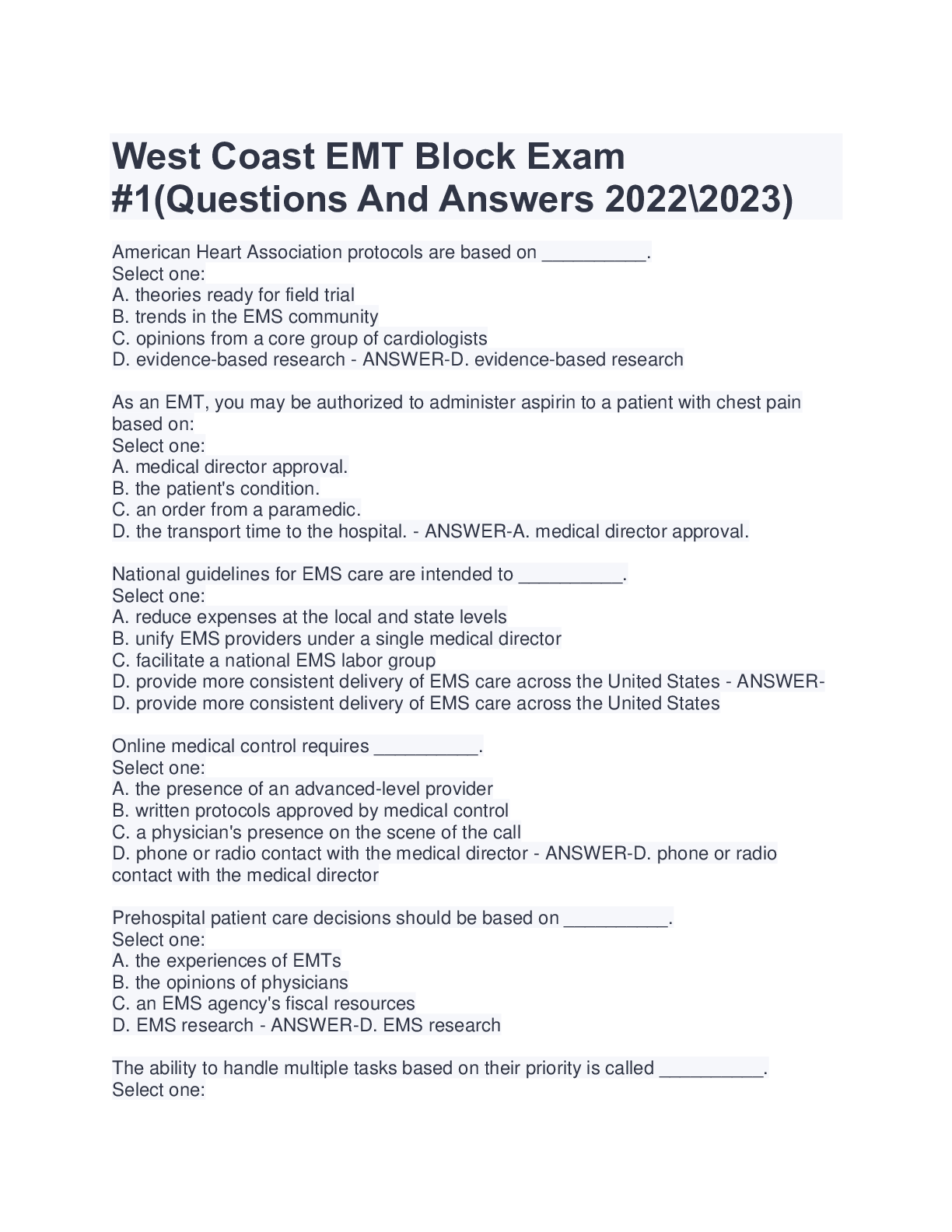

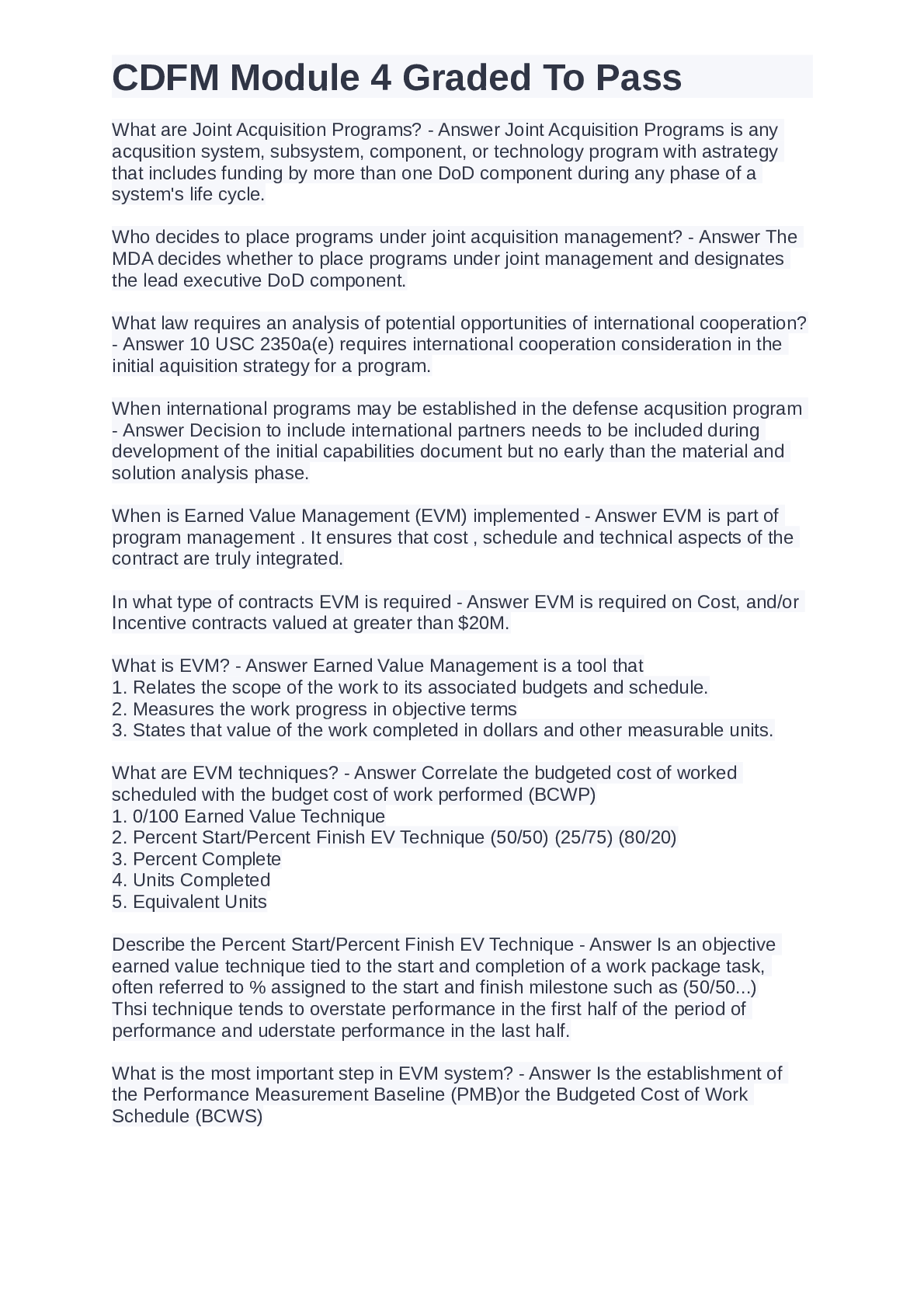
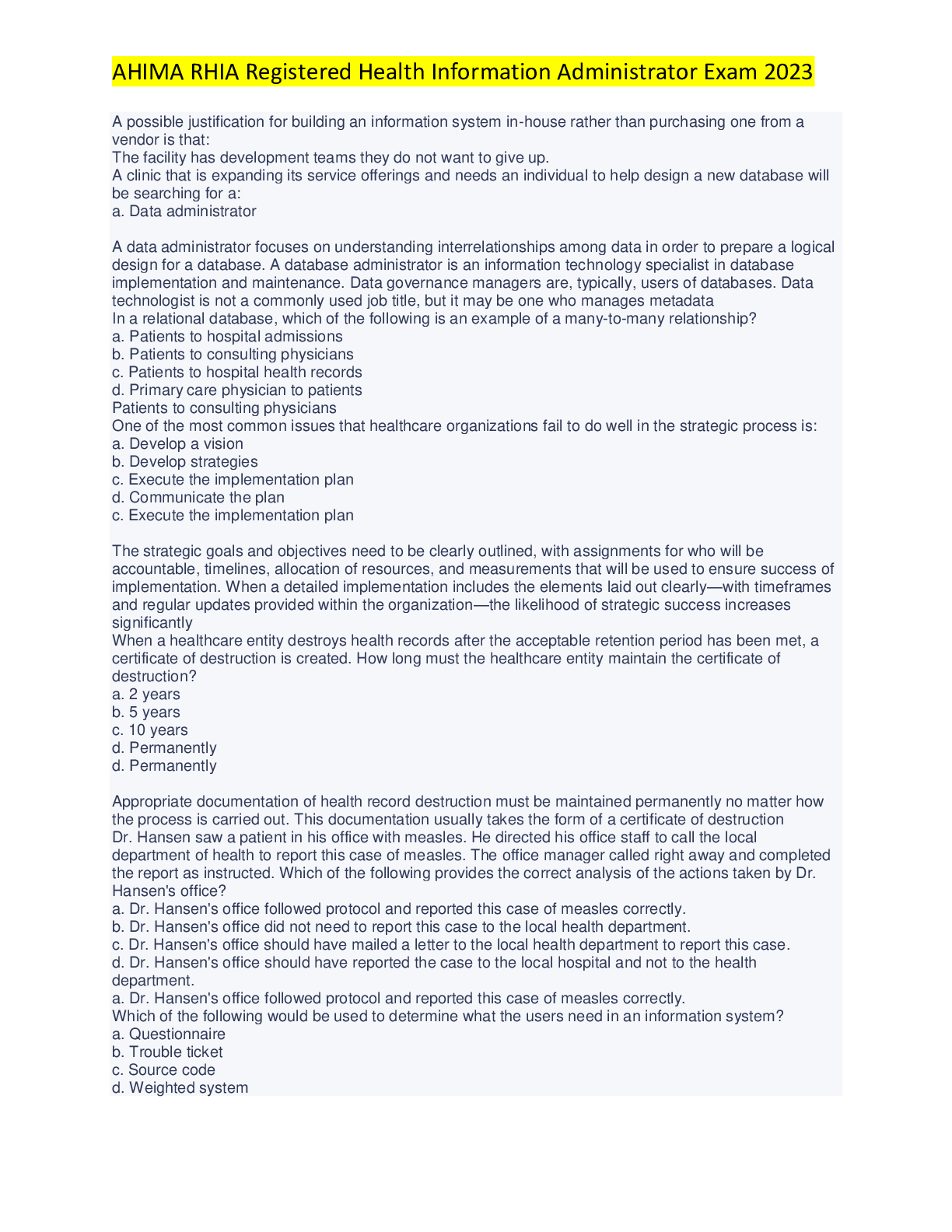
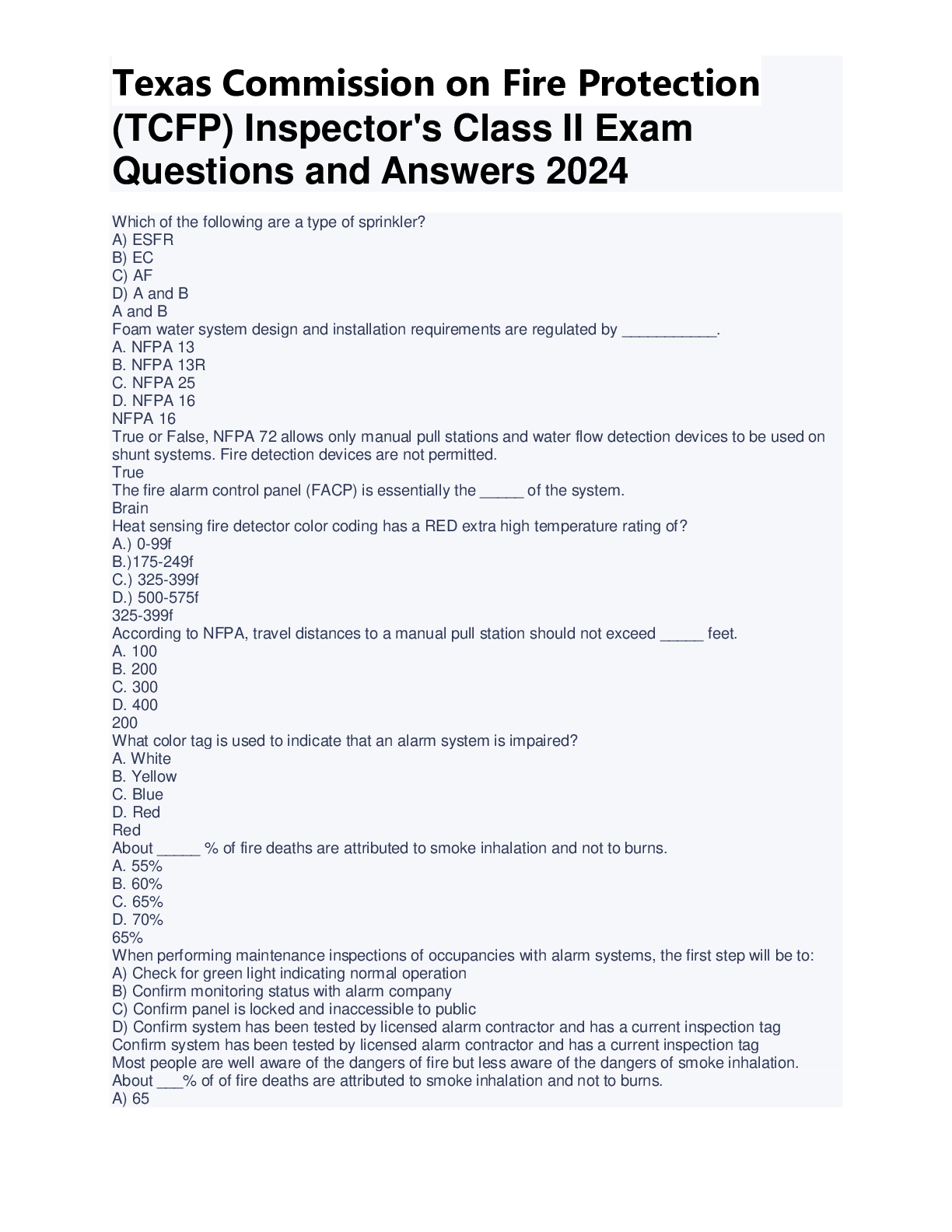

.png)
.png)
